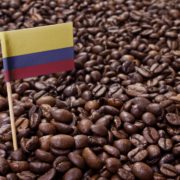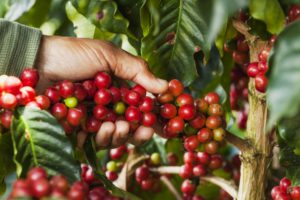Colombian Coffee Beans & The Best Ways To Brew Them
Colombia produces 810,000 metric tons or 1,785,744,000 pounds of coffee beans every year. That’s why Colombia is a major player and ranks third in the top ten countries when it comes to coffee production.
Colombian coffee beans are famous around the world, serving the best-tasting coffee every time.
You can make different types of coffee using one coffee bean, like the Columbian medium-roast arabica beans.
In this post, you’ll learn the different things you can do with Colombian coffee beans so you can enjoy Colombian coffee in various ways.
Make a Colombian Coffee: The Chemex
It uses a medium-coarse grind, and it’s considered the grandfather of pour-over coffee makers. The signature bitter taste of this coffee is due to the use of a paper filter which removes a lot of oil from the South American coffee beans.
Now, you won’t need to add sugar because Chemex has a sweet caramel-like flavor. You probably need a little cream. Among the different types of coffee-making, Chemex uses the thickest paper filters, so the sweetest notes shine. While you can always brew fine-ground coffee beans for a less sugary flavor, it takes a longer time to brew.
Make a Colombian Coffee: The Siphon
The Siphon is also referred to as a vac pot. When making this coffee it uses a siphon that’s made from cloth, pressure, and heat to infuse water with Colombian coffee beans. The grind is finer than drop and coarser than espresso. If you like to enjoy a full-bodied taste in a moderate amount, Siphon is the right one for you. The coffee beans become a little less sweet and more fruity in a light roast.
Make a Colombian Coffee: The French Press
The French Press makes another plunger in your house. This type of coffee uses coarse ground Colombian coffee beans. The coffee beans are plunged for about three to five minutes. You’ll come up with a thick, bittersweet honeyed coffee cup that almost appeals like a French roast. Get close to the pure taste of the coffee beans, but still get a lighter and sweeter cup by brewing it for less time. The best coffee for a french press, which is roasted no more than 3-4 weeks ago and grind before brewing. To find out more, check out this site. The grind must be large. Coffee particles are the size of sand sugar. Get close to the pure taste of the coffee beans, but still get a lighter and sweeter cup by brewing it for less time.
Make a Colombian Coffee: The Stovetop Espresso
The Stovetop Espresso has been one of the most favorite types of coffee using a stovetop steamer in Colombia in the 1900s. Since the 1930s, the stovetop steamer has been the preferred household coffee-maker in South America and Europe. The grind is slightly coarser than the true coffee espresso.
The pressurized water intersperses with the fine-ground Colombian coffee whenever heat is added. It produces a lower pressure as compared to standard espresso. The resulting taste isn’t quite as bitter. This coffee-making method showcases the most bitter notes of Colombian coffee beans that came off slightly metallic and toasted malt.
Colombian Coffee Beans: Blend It With Guatemalan and Brazilian Coffee Beans
In the coffee world, blending is usually regarded as a “dark art.” Blending is a simple concept which involves combining coffee beans that come from two or more origins or different roast levels. It produces something different or a unique-taste from each type of coffee bean used.
This idea isn’t new because blending has been used when coffee was commercially produced. Now, consumers aren’t limited to one coffee type alone because blending coffee has more to offer, to suit everyone’s taste.
Here are some of the reasons why different coffee beans are blended:
● Blended coffee tends to be more satisfying as compared to those made from either one of these types of coffee beans alone.
● Large-scale roasters blend coffee and aim to produce a more consistent flavor.
● Consistently offers a coffee displaying similar flavor profiles every year.
● Come up with a decent-tasting coffee using less expensive coffee beans for volume and combined with more expensive coffee beans to improve the coffee’s overall flavor.
● Smaller-scale roasters try to improve a single-origin coffee bean combining it with another type of coffee bean. It aims to come up with a coffee blend that’s better than the sum of its parts. Blended coffee beans help people create a new and unique coffee, such as a cup of coffee with notes of chocolate or strawberry.
Conclusion
You can do many different things with Colombian coffee beans. There’s always something for everyone to enjoy, from the Chemex, Siphon, the French Press, and the Stovetop Espresso. These methods are well-known to Colombian coffee farmers themselves, with years of experience producing coffee beans and making their coffee recipes at home.



Leave a Reply
Want to join the discussion?Feel free to contribute!